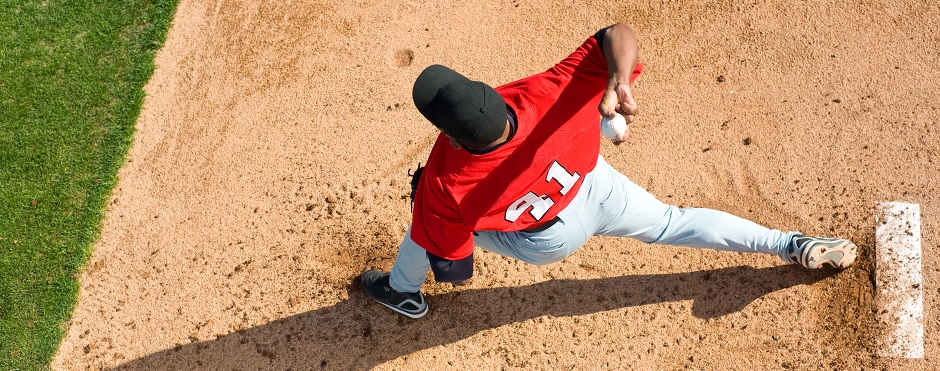
Common Baseball Injuries
Leave a CommentOpening day is finally here! And while we may not be able to spectate or tailgate like we normally would, we can still root on our favorite teams! Did you know baseball can have lasting effects on our bodies? It is import to understand and appreciate the anatomy involved and how it relates to the most typically experienced injuries during such a repetitive and overhead-dominant sport.
Rotator Cuff Tear:
The rotator cuff is a group of four muscles whose tendons connect/wrap and form a covering around the head of the upper arm bone where it meets at the shoulder. A tear of these muscles from repetitive throwing motions would affect one’s ability to lift and lower the arm, making daily tasks like putting on a shirt nearly impossible and definitely painful. A tear also onsets weakness of these muscles which can result in an unstable shoulder joint with heightened pain, especially when lying on the affected shoulder. Conservative treatment like therapy can help to improve pain/function to minor tears, otherwise surgical intervention and repair for more significant injuries would be elected.1
Ligament Injuries:
Ligament tears can occur frequently in overhead throwing sports like baseball. Commonly with overhead sports, and even more so with baseball pitchers, a typical ligament injury seen is an ulnar collateral ligament (UCL) tear. The UCL has a job of stabilizing the elbow joint and preventing the arm from shifting sideways. Symptoms of pain and tenderness occur on the inner portion of the elbow. Sometimes one may also experience numbness and tingling along the ulnar nerve distribution (small and ring finger), resulting in a weakened grip. If the joint is stable, a UCL tear can be treated conservatively, otherwise surgical intervention is needed1.
Hamate Hook Injuries and Mallet Fractures:
Impact trauma to various parts of the hand can result from swinging a bat or being struck with the ball. In club and racket sports like baseball, the handle of the bat can impact the hamate bone of the hand and shear of the hook. Additionally, receiving a blow from the ball to the finger can fracture the tip joint or cause the finger to “buckle” and injure the tendon resulting in a mallet fracture2.
Anytime one participates in sport (or spectating) there is a chance of injury. Understanding the common injuries, mechanisms, and anatomy of overhead throwing sports like baseball could better assist players, therapists, trainers, and coaches to target areas of the body with relative exercises and rehabilitation to minimize and prevent injury in order to maximize opportunities for participation and competition.
If you would like to learn more about enhancing your baseball performance and preventing throwing injuries, check out our video throwing analysis. If you experience any pain or injuries during play, contact Athletico Physical Therapy for a free assessment. Athletico is now offering appointments in-clinic or virtually through telehealth. Request your free assessment using the button below.
The Athletico blog is an educational resource written by Athletico employees. Athletico bloggers are licensed professionals who abide by the code of ethics outlined by their respective professional associations. The content published in blog posts represents the opinion of the individual author based on their expertise and experience. The content provided in this blog is for informational purposes only, does not constitute medical advice and should not be relied on for making personal health decisions.
References:
1. Mudbug. “Common Baseball Injuries.” Michael A. Gleiber, MD, 31 Mar. 2015, www.michaelgleibermd.com/news/common-baseball-injuries/.
2. “TriHealth.” TriHealth, www.trihealth.com/dailyhealthwire/health-topics/orthopedics/play-ball–common-baseball-injuries.
